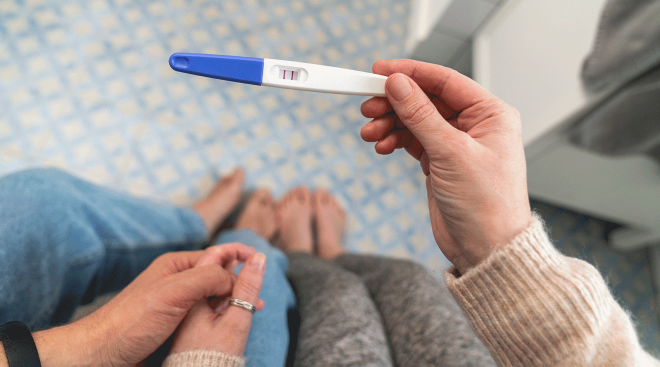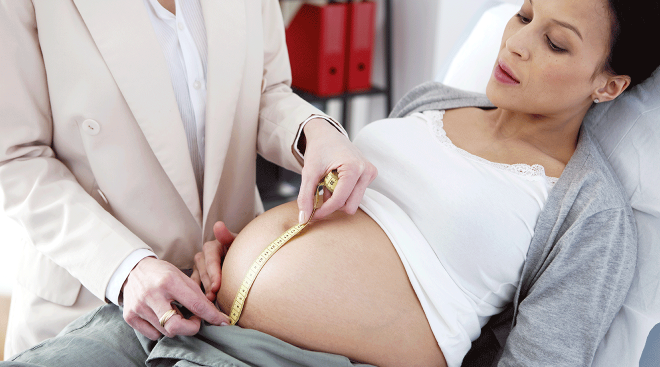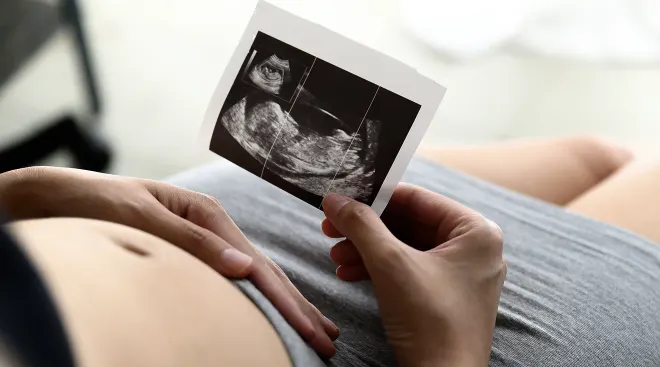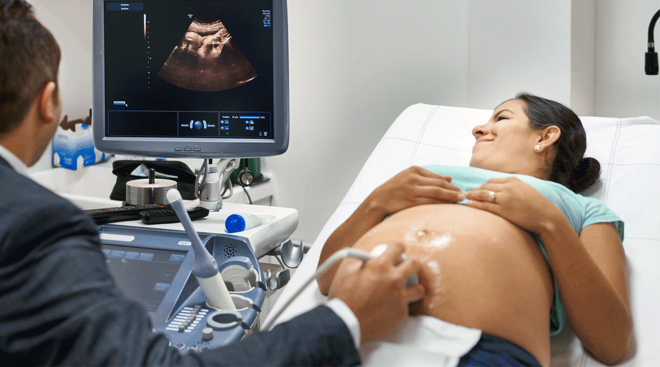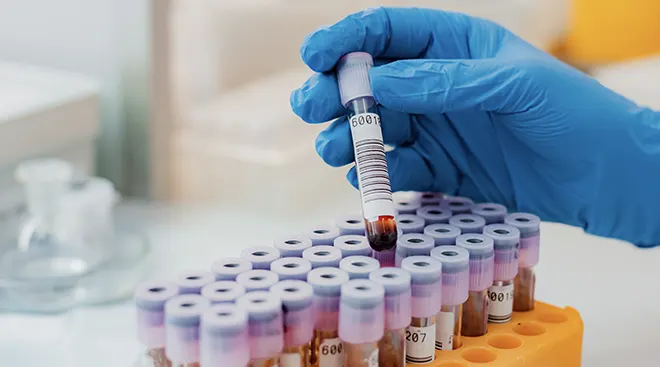Why Your Doctor Might Recommend a Nonstress Test Later in Pregnancy
Between all the other tests and appointments you have on your calendar in late pregnancy, your provider might recommend a nonstress test. Having to take a fetal nonstress test (aka NST) might sound nerve-wracking. But before you start to worry, it’s helpful to find out why your doctor ordered the test, how it works and what you can expect from your results. Keep reading for all the details on this prenatal test.
A pregnancy nonstress test is a noninvasive testing method that measures baby’s heart rate in response to movement or contractions, notes Cleveland Clinic. The screening helps check whether baby is healthy and getting enough oxygen. “It’s safe and painless and gets its name because it puts no stress on you or the fetus,” says Jill Skoczylas, MD, an ob-gyn with Atlantic Medical Group in Rockaway, New Jersey.
There are a few main reasons a doctor might recommend a nonstress test during pregnancy. Here are a few possible scenarios, according to experts:
- You’re over 35 years old
- You have diabetes
- You have a hypertension disorder, such as preeclampsia
- You’re expecting twins or multiples
- Baby measures small for their gestational age
- You’re feeling fewer fetal kicks than normal
- You’re past your due date
Your doctor may start scheduling nonstress tests around 28 weeks of pregnancy, according to the American Pregnancy Association (APA). By this time, baby is developed enough to react to movement.
Depending on the reason for your NST, you could be asked to test weekly, twice a week or even more often. “Higher-risk pregnancies require more frequent monitoring compared to lower-risk pregnancies,” says Jamy Bulgarelli, DO, an ob-gyn at Pediatrix Medical Group in Grand Prairie, Texas.
Here’s what you can expect at a nonstress test appointment, according to Skoczylas:
-
You’ll start by lying down on a bed, recliner or exam table.
-
Next, your provider will place an elastic belt around your belly. This belt will have loops for sensors to attach to it.
-
Two sensors will be placed on your stomach: one to monitor your contractions and the other to monitor baby’s heart rate.
-
You’ll sit while the provider collects data about your contractions and baby’s heart rate.
-
Once your provider collects all the information they need, your test is done.
-
The sensors and belt will be removed from your belly, and your provider will discuss the results with you.
How long do nonstress tests take?
Fetal nonstress tests take about 20 to 30 minutes to complete, according to the APA. But they might take longer if baby’s nonreactive. Sometimes, baby doesn’t move because they’re simply asleep—in this case, a nurse might wake them up with a “buzzer” or ask you to change positions.
There’s not much extra preparation when it comes to taking a nonstress test in pregnancy. “It’s probably a good idea to use the restroom and empty your bladder beforehand, though, so you can relax comfortably during the NST,” says Bulgarelli.
Nonstress test results are either reactive or nonreactive, according to Cleveland Clinic. NSTs are used to help look into factors such as baby’s oxygenation, their cardiac status and ability to tolerate labor, says Kecia Gaither, MD, maternal-fetal medicine director at NYC Health + Hospitals/Lincoln in the Bronx and associate professor of clinical obstetrics and gynecology at Weill Cornell Medicine.
Thankfully, you get your NST results shortly after the test. Find out what they mean, below.
What’s a normal nonstress test range?
Normal nonstress test results, also called reactive, mean baby’s heart rate increases when they move or you have a contraction. Baby has to react at least twice within a 20-minute testing period to get a reactive result.
What happens if you fail a nonstress test?
A nonreactive nonstress test happens when baby’s heart rate doesn’t increase with movement. It might mean baby’s not getting enough oxygen, is extra sleepy or is reacting to a medication you’re taking, says Cleveland Clinic. If you get this result, it’s important to know it doesn’t necessarily mean something’s wrong.
“Babies take naps throughout pregnancy, and their heart rates become less reactive while asleep,” says Bulgarelli. Your provider might try repeating the NST again while you drink some sugary juice, play music or use a vibroacoustic stimulator—a device that sends gentle vibrations through the belly to baby.
If these extra steps don’t produce reactive results, Skoczylas says that your doctor will usually recommend a biophysical profile, or BPP, with an ultrasound to further evaluate baby’s movement, breathing and fluid. And if something comes back irregular on these tests, your provider might send you to labor and delivery for a thorough checkup.
While a nonstress test might, in fact, feel very stressful, remember that all of these protocols are there to ensure baby’s safety. Your provider will explain your results and let you know what next steps you need to take.
Please note: The Bump and the materials and information it contains are not intended to, and do not constitute, medical or other health advice or diagnosis and should not be used as such. You should always consult with a qualified physician or health professional about your specific circumstances.
Plus, more from The Bump:
Jamy Bulgarelli, DO, is an ob-gyn at Pediatrix Medical Group in Grand Prairie, Texas. She received her medical degree from Touro University Nevada in 2019 and went on to complete her residency at John Peter Smith Hospital in 2023.
Kecia Gaither, MD, MPH, MS, MBA, FACOG, is a double board-certified ob-gyn and maternal-fetal medicine director at NYC Health + Hospitals/Lincoln in the Bronx. She also serves as an associate professor of clinical obstetrics and gynecology at Weill Cornell Medicine. She received her medical degree from SUNY Health Science Center in Syracuse, New York, and holds a master’s degree in public health. She has particular expertise in caring for women with diabetes, HIV and obesity in pregnancy.
Jill Skoczylas, MD, is a board-certified ob-gyn with Atlantic Medical Group in Rockaway, New Jersey. She earned her medical degree from St. George’s University School of Medicine in Grenada and went on to gain advanced training in obstetrics crisis management and neonatal resuscitation, as well as a certification in robotic surgery.
Cleveland Clinic, Nonstress Test, October 2022
American Pregnancy Association, Fetal Non-Stress Test (NST)
Learn how we ensure the accuracy of our content through our editorial and medical review process.
Navigate forward to interact with the calendar and select a date. Press the question mark key to get the keyboard shortcuts for changing dates.





































